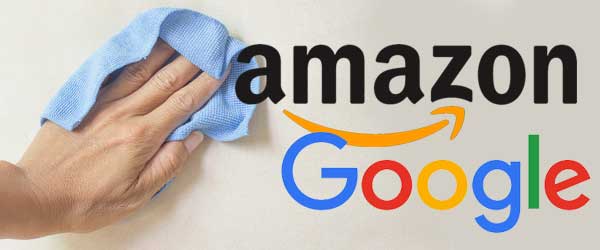Amazon and Google are using very different approaches as they battle to dominate the home services market
In part 1 of this series I explained that there is an ongoing battle between tech giants to control the home services marketplace. The two big entries into this battle so far are Amazon and Google and they have been taking very different approaches.
Retail Heavyweight
Amazon has already done a US-wide launch of Amazon Services. Amazon sells services under their name, collects payment from the client, and hires companies to provide the service. Amazon normally takes 10-30% of the price of the service off the top as their cut. Amazon has been willing to offer these services under their name. In some marketplaces they have even hired employees to provide the service. In 2016 Amazon hired home cleaners to work directly for Amazon to provide maid services in the Seattle market. In some ways this is not too different than the model used by companies like Home Depot and Lowes, which have offered installation services for many years. To date, Amazon has seemed to show a preference for working with fewer larger companies. When possible they utilize national companies that can provide consistent service nationwide.
Search and Destroy
The other model that is developing is the third-party marketplace model which Google has been testing. Google has been quietly testing the Google Home Services platform since 2016. In 2017 they expanded it to 7 major west coast markets including Seattle, San Francisco, Portland, and Los Angeles. In this model, the “three pack” or local map is replaced by a Google Services box that lets the consumer request a quote from 1-5 service providers of their choice. Under this model the consumer is doing business directly with the service provider, including choosing from a list of companies and making payment directly to the service provider. Google makes their money by using an advanced version of Google AdWords. The providers pay per quote request. Since a consumer can request up to 5 quotes at once from one screen, this can be a more profitable model than pay per click for Google.
3-Pack Example

Google Home Services Example

And the Winner Is…
If this battle was just taking place as outlined above, my money would be on Google to be the winner. Google’s dominations of search positions it well to take over the home services marketplace. There are only two real obstacles I see in its way. The first is government actions, such as those taken by the European Union over these companies’ monopoly powers. The second pushback could come from consumers. In the test markets where Google is running Home Services, every result on the first page of Google is now some kind of paid result. As this becomes more understood, consumers might rebel against a search engine that seems to overtly prefer those that pay versus the best companies.
In part 3 of The Future of the Home Services Industry, I’ll examine yet another front in the home services battle: control of the home.
Derek Christian is a partner in Castle Keepers, one of the largest and fastest growing independent house cleaning companies in America. Derek is Co-publisher and Director of Business Development & Sales for Cleaning Business Today, and a partner in Cleaning Business Builders. He founded My Maid Service in Cincinnati, OH and spent twelve years at P&G working on household cleaning products.






